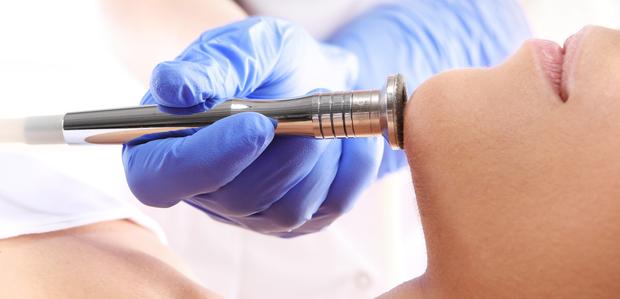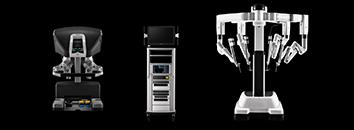Department of Dermatology & Cosmetology

Due to the increased adoption of unhealthy lifestyles, worsening pollution, and limited awareness, skin conditions have become more common worldwide. This underscores the need for top-notch skin care guidance and treatments from leading dermatologists. At Gleneagles Aware Hospitals, LB Nagar, Hyderabad, we provide accurate medical evaluation and treatment for a wide spectrum of skin, nail, hair, and cosmetic concerns, whether they are primary issues or linked to underlying systemic conditions.
Conditions We Treat
Department of Dermatology at Gleneagles Aware Hospitals excels in the diagnosis and treatment of a wide array of skin conditions, providing both regular and specialised care tailored to the severity of each condition. We address various skin issues, including:
- Autoimmune Skin diseases.
- Infectious conditions such as Impetigo, Dermatitis, and Rashes.
- Chronic skin conditions like Psoriasis.
- Skin cancer, pre-cancers, and screenings encompass various types of cancer.
- Acne Care for adolescents and adults, including Cystic Acne.
- Alopecias (hair loss) and Hirsutism (male pattern hair growth in women).
- Blistering diseases like Dermatomyositis, Pemphigus, Lupus, Vasculitis, and Scleroderma.
- Scalp concerns like Dandruff and Folliculitis.
- Nail conditions, including Fungal nails.
- Aesthetic and cosmetic dermatology treatments, such as those for Birthmarks, ageing skin, Fat reduction, Hair transplants, Moles, Pigmentation disorders, Vitiligo, Darkening, Multiple moles, Rhinophyma, Skin peels, Vascular lesions, Warts, Wrinkles, Rosacea.
- Specialised care in Pediatric Dermatology.
Department of Dermatology At Gleneagles Aware Hospitals, LB Nagar, Hyderabad
Gleneagles Aware Hospital is one of the leading dermatology hospitals in Hyderabad, featuring a well-established and highly skilled dermatology department. Our team includes some of the most accomplished dermatologists in the field. When it comes to delivering top-tier care for skin health and aesthetic treatments, you can always trust our reputed dermatology specialists in Hyderabad.
Why Choose Gleneagles Aware Hospital, LB Nagar, Hyderabad?
Gleneagles Aware Hospitals' Dermatology and Cosmetology Department is dedicated to delivering advanced medical and surgical treatments, ensuring patients receive the highest quality care. This makes us one of the best dermatology hospitals in Hyderabad. Our dedicated Dermatologists and Cosmetologists are experts in their fields and committed to diagnosing, investigating, and treating a variety of skin conditions. We are equipped with cutting-edge technology and provide a welcoming atmosphere, guaranteeing an outstanding medical journey for our patients.
Our Doctors
View all
Dr Praveen Kumar B Y
Consultant
MBBS, MD
Dermatology and Cosmetology Treatments at Gleneagles Aware Hospital, LB Nagar, Hyderabad
Various skin conditions demand unique solutions, and at Gleneagles Aware Hospitals in Hyderabad, our dermatologists tailor treatments based on thorough examinations. We offer a wide array of dermatological and cosmetic procedures, including:
- How to consult with the Dermatologists at Gleneagles Aware Hospital, Hyderabad?
To consult with our dermatologists and cosmetologists, you can reach out to our team. Or, you can also book an appointment through our website.
- When is it advisable to schedule an appointment with a Dermatologist?
If you notice any unusual changes in your skin or want to enhance the aesthetic appearance of your skin, it's crucial to consult a dermatologist or cosmetologist in Hyderabad promptly. You can also consult with a doctor for a regular skin assessment.
- What can I expect during my visit to the Dermatology specialist at Gleneagles Aware Hospitals, LB Nagar?
The Dermatologists and Cosmetologists at Gleneagles Aware Hospitals will review your medical history, discuss your concerns, conduct a proper diagnosis, and then lay out a personalised treatment plan for you during your consultation.
FAQ
Why Choose Us?
-
PATIENT EXPERIENCE
Your care and comfort are our top priorities. We ensure that the patients are well informed prior to every step we take for their benefit and that their queries are effectively answered.
-
LATEST TECHNOLOGIES
The Gleneagles Hospitals' team stays up to date on the advancements in medical procedures and technologies. Experience the Future Healthcare Technologies now at Gleneagles Hospitals.
-
PROVIDING QUALITY CARE
Strengthening lives through compassionate care, innovative therapies and relentless efforts. It reflects in the DNA of our passionate team of doctors and dedicated clinical staff.










